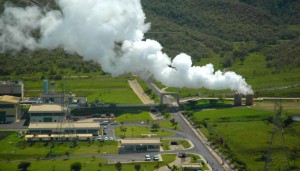
Source GEA
Ormat Technologies Inc., is a company based in Reno, Nevada US. It specializes in binary geothermal energy systems. The binary systems are able to draw power from relatively low-temperature fluid of around 100 °C.
Japan’s Toshiba Corp is a multinational conglomerate corporation headquartered in Tokyo, Japan. It focuses in the conventional flash geothermal energy systems. The flash systems uses high-temperature steam to spin generator turbines.
Toshiba holds a 26% market share, making it the world’s geothermal leader. Ormat has produced roughly 12% of the world’s installed geothermal power capacity making it the fourth largest in the market.
The two companies will collaborate to build plants around the world by combining complementary technologies. The collaboration expected to increase geothermal market opportunities to support future growth.
In some situations, a combined cycle using both systems can be employed, with the specific technology for each project chosen based on the unique characteristics of the geothermal resource.
The first project expected to be implemented under this collaboration is the Menengai geothermal project in Nakuru, Kenya.



